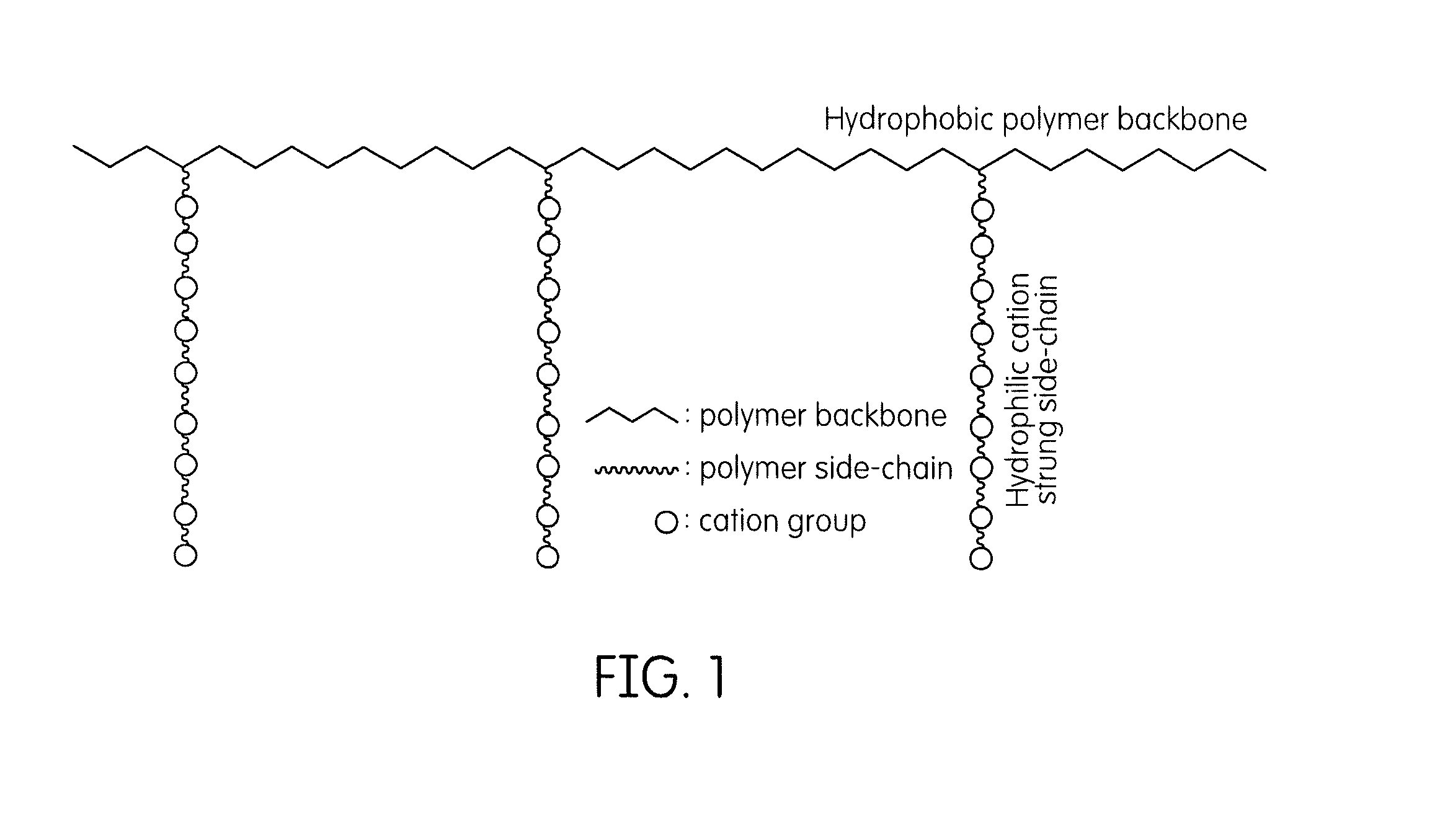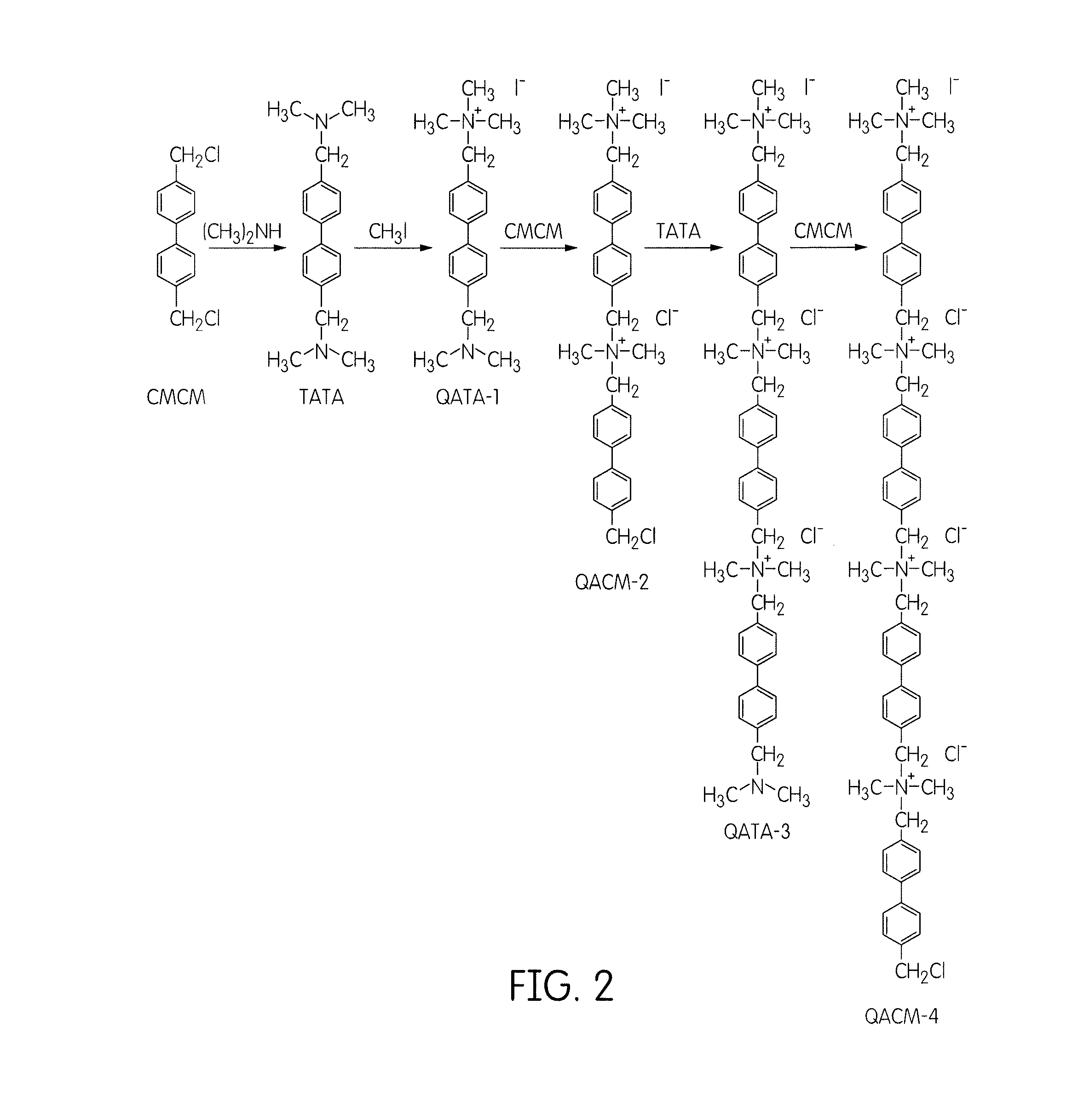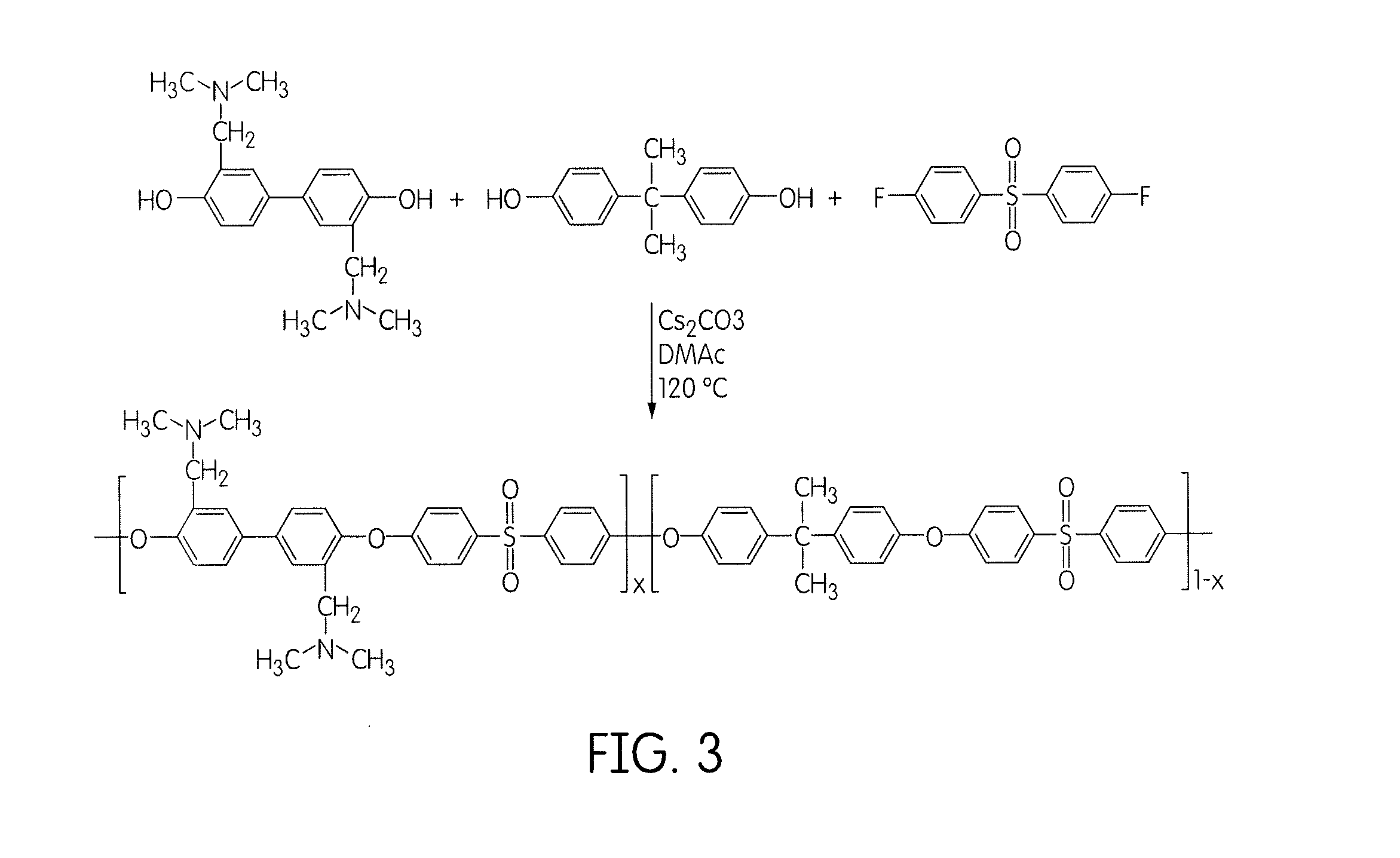Cation-strung side chain polymers useful in hydroxide/anion exchange membranes
a technology of anion exchange membrane and side chain polymer, which is applied in the direction of membranes, sustainable manufacturing/processing, and separation processes, can solve the problems of high cost and unsatisfactory durability of catalysts, excessive water uptake, and reduce morphological stability and mechanical strength. , to achieve the effect of suppressing water uptak
- Summary
- Abstract
- Description
- Claims
- Application Information
AI Technical Summary
Benefits of technology
Problems solved by technology
Method used
Image
Examples
example 1
[0049]This example illustrates the preparation of a quaternary ammonium-strung polysulfone hydroxide exchange membrane (SQAPSF-C10, FIG. 4). Briefly, SQAPSF-C10 was synthesized by three major steps: (1) synthesis of a cation-strung side-chain precursor, (2) synthesis of a tertiary amine-functionalized polysulfone, and (3) attachment of the cation-strung side chain precursor to the polymer backbone of the tertiary amine-functionalized polysulfone.
1.1. Synthesis of the Quaternary Ammonium Cations-Strung Side-Chain Precursor
Synthesis of the Compound TATA:
[0050]60 mL dimethylamine aqueous solution (40 wt. %, i.e., 24 g or 533 mmol) was added into 20 mL solution of 4,4′-bis(chloromethyl)-1,1′-biphenyl (0.5 g / mL, i.e., 40 mmol) in methanol at 0° C. with stirring. After one hour of reaction at 0° C., the temperature was raised to 45° C. for six hours to complete the reaction. The white crystal TATA product was obtained by evaporating the solvent, and then recrystallized from THF. The yield...
example 2
[0058]Example 2 demonstrates the preparation of a quaternary ammonium-strung poly(2,6-dimethyl-1,4-phenylene oxide) hydroxide exchange membrane (SQAPPO-C6, FIG. 7b) in accordance with the invention. SQAPPO-C6 was synthesized by three major steps: (1) synthesis of a cation-strung side-chain aliphatic precursor (see FIG. 7a), (2) synthesis of a brominated PPO, and (3) attachment of the cation-strung side chain aliphatic precursor to the brominated PPO backbone.
2.1. Synthesis of the Quaternary Ammonium Cation-Strung Aliphatic Side Chain Precursor
Synthesis of the Compound QA(CH2)6TA-1:
[0059]1.4 g iodomethane (10 mmol) was added dropwise into 40 mL TA(CH2)6TA solution in THF (i.e., 1.7 g, or 10 mmol) at room temperature. After stirring for 5 hrs, the white precipitate was collected by filtration and thoroughly washed with THF. The obtained white QA(CH2)6TA-1 crystals were purified by recrystallization from THF. The yield of QA(CH2)6TA-1 was 70% (2.1 g per batch). 1H NMR (400 MHz, DMSO-d6...
example 3
3.1. RAFT Method
3.1.1. Synthesis of Polysulfone Macro RAFT Agent.
[0066]A typical procedure for synthesizing polysulfone (PSF) macro RAFT agent was as follows: To a 500 mL three-necked flask equipped with condenser and overhead stirrer, 10 g chloromethylated PSF, sodium dithiobenzoate (10% excess to chloromethyl groups), and sodium iodide (10% excess to sodium dithiobenzoate) were dissolved into 200 mL dry tetrahydrofuran. The mixture was heated at reflux conditions (60° C.) for 1 h. The polymer product in fiber-like precipitate form was obtained by dropping the polymer solution into ethanol, and the polymer product was purified by washing with hot ethanol and water several times and then was dried completely.
3.1.2. Synthesis of Polysulfone Graft Chloromethylstyrene (PSF-PStCl).
[0067]A typical procedure for synthesizing polysulfone graft chloromethylstyrene (PSF-PStCl), was as follows: To a flame-dried 100 mL three-necked flask equipped with nitrogen inlet, condenser and overhead sti...
PUM
| Property | Measurement | Unit |
|---|---|---|
| temperature | aaaaa | aaaaa |
| temperature | aaaaa | aaaaa |
| temperature | aaaaa | aaaaa |
Abstract
Description
Claims
Application Information
 Login to View More
Login to View More - R&D
- Intellectual Property
- Life Sciences
- Materials
- Tech Scout
- Unparalleled Data Quality
- Higher Quality Content
- 60% Fewer Hallucinations
Browse by: Latest US Patents, China's latest patents, Technical Efficacy Thesaurus, Application Domain, Technology Topic, Popular Technical Reports.
© 2025 PatSnap. All rights reserved.Legal|Privacy policy|Modern Slavery Act Transparency Statement|Sitemap|About US| Contact US: help@patsnap.com



